The Article
6000A Integrated Amplifier From Audiolab
1st July 2019
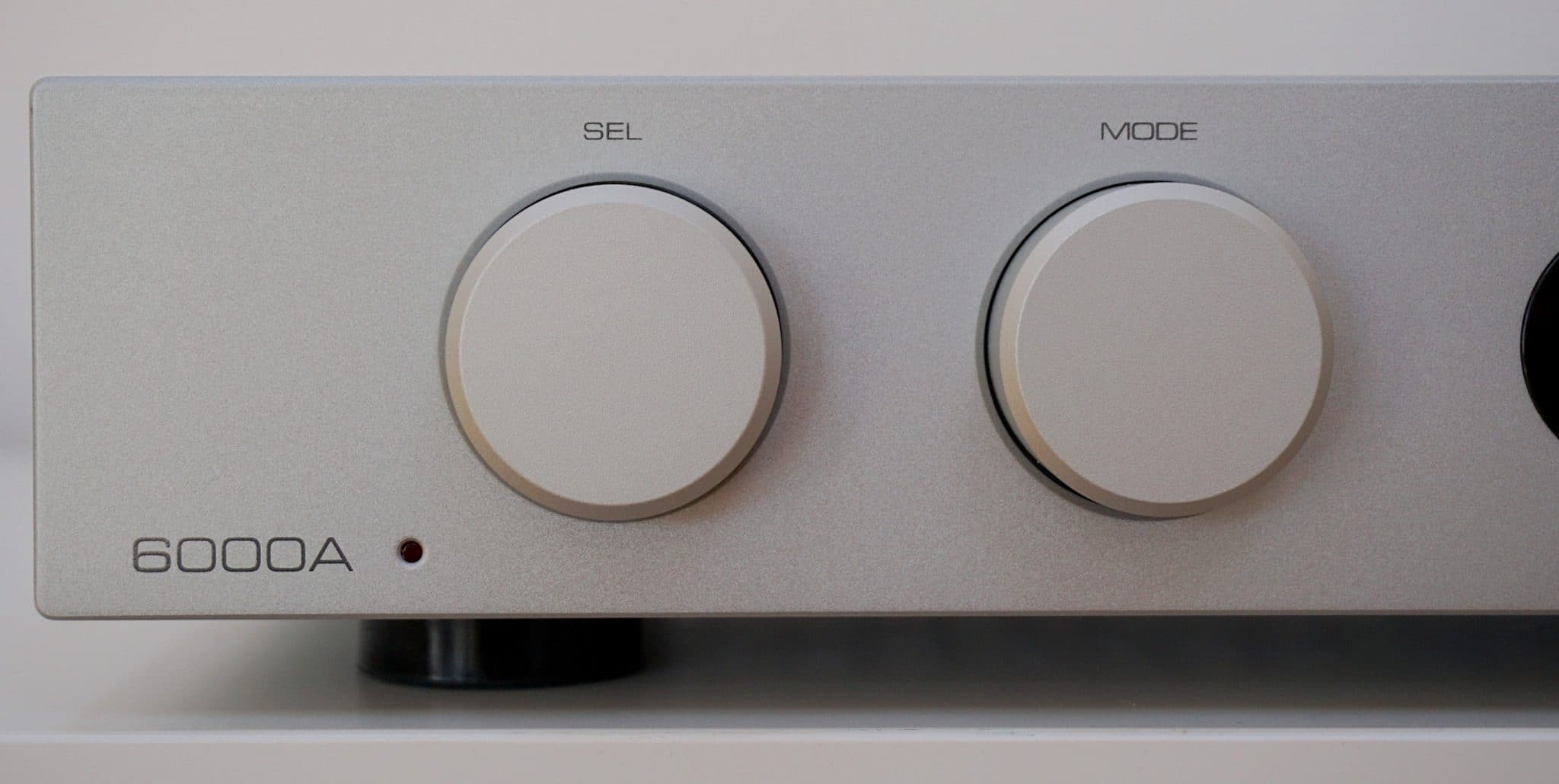
Adopting a traditional and solid form factor on the outside, Paul Rigby realises that the magic is occurring under the lid
The thing about the 6000A, when the aesthetics are considered, is that it looks like an integrated amplifier. Don’t dismiss that point. It’s actually critical to target sales. I say again, the 6000A looks like a traditional integrated amplifier. It looks safe. It looks steady and solid. It doesn’t try anything fancy. You would never accuse the chassis of ever emerging from an Italian design studio. There’s no chic fashion sense with this one. If you saw this box in the 80s, it would look rather racy, that’s for sure, but it wouldn’t look too out of place.
For some users, that is all they want. And that’s important. Weird and even slightly off-kilter designs can scare and make certain hi-fi fans feel uncomfortable. Even slightly conservative half-width amplifiers can be an issue for some.
The 6000A – at least on the outside – is the Mother’s Pride processed white loaf of amplifier design. You can see it for what it is at 30 paces. Again, I’m not damning this amp with faint praise when I say that. That’s not a bad thing. It’s a firm design choice.
Before I began the review of this box, I was comforted to know that the designer of the 6000A was also the same designer of the older 8300A. Jan Ertner took the basis of the latter to create the former which meant that hard won knowledge was now being refined and improved upon. There’s nothing worse than a single line of products that feature a host of designers who not only constantly reinvent the wheel but often make the same old mistakes over and over again (it’s happened many times in the past). Not here. So I already had a sense of confidence going into this one.
This is an amplifier but it features other components too. The ES9018 Sabre32 Reference DAC is one of those, featuring 32bit HyperStream architecture and Time Domain Jitter Eliminator. Again, this chip is not a foreign component. You’ll find it in the company’s M-DAC. Continuity again.
Connected to the DAC are the 6000A’s four digital inputs – two coaxial and two optical – which handle 24bit/192kHz. Tagged to these are user-selectable digital filters: Fast Roll-Off, Slow Roll-Off and Minimum Phase. I’ll say now that I normally hate these sort of things. Anything that takes me away from a pure, default, flat signal is an experience as near to abhorrent as I’m likely to find. That said, I’ll give them all a test in due course.
Streaming is also possible via Bluetooth (plus the now usual aptX codec).
A Class AB amplifier, that can also be used as a pre-amp and as a power amplifier too, the integrated mode of the design pumps out 50W per channel into 8 Ohms, the output stage of the discrete power amp circuits uses a CFB (Complementary Feedback) topology plus a meaty 200VA toroidal transformer followed by four 15000uF reservoir capacity (60000uF in total). The idea is to reduce the strain upon the amplifier and to maintain a sort of backup of power, ready to use.
Audiolab has included a phono stage for moving magnet phono cartridges – a JFET-based circuit with RIAA equalisation. A dedicated headphone amp with current-feedback circuitry is also included.
Spanning 445 x 65.5 x 300mm and weighing 7.8kg, the 6000A is available in a choice of silver or black.
SOUND QUALITY
I started with Mike Oldfield and his Platinum (Virgin) LP from 1979. I played Into the Wonderland, featuring vocals by Wendy Roberts. A sweet, beautifully melodic and slightly melancholic, low key ballad with a high-energy, rocking finish.
I suppose, if I were to describe the 6000A in one word, it would be confident. This amplifier is not shy, it doesn’t try to hide any aspect of its sound envelope. The 6000A will never die wondering. That is, the 6000A gives its all in the cause of making you happy.
The overall presentation from the Audiolab 6000A was balanced and balanced means you get to hear some bass. This is not always the case for mid-placed budget equipment. Bass is often sacrificed or at least trimmed to some extent. Even the best sub-£1,000 amplifiers out there love to trim bass. It’s a cost issue. That doesn’t happen with the 6000A.
The 6000A allows bass into the soundstage. That means that both the percussion and bass guitar were not only able to ground the music and stop it flapping in the wind but also offer a solid, rhythmic pace to the whole arrangement. That is, there was a sense of order here. The music flowed with an added, deeper groove. The structure was both solid and funky.
One of the persistent fears I have as a reviewer, from amplifiers designed at this price point, is frequency discipline. This is another reason that may sub-£1000 amplifiers are rather bass shy. Most of them can’t handle it. Too much of it, at any rate.
That is, there is a danger of allowing too much bass into the soundstage because it may create a warming feeling, leaking into the midrange and creating a sepia-like effect. Again, that never occurred with the 6000A. Frequency discipline was paramount so bass stayed put and never bloomed into the mids.
In fact, let’s pause for a moment here to dwell and emphasise this one feature. If I was going to pin one all-important factor for the success of the 6000A it would be tonal balance. In fact, you could ally tonal balance as being the killer feature of the 6000A. The headline. Tonal balance is the underlying strength of the 6000A. I really haven’t heard anything like it under £1,000.
The upper midrange was delightfully detailed and accurate although fragility and delicacy were not great priorities, I have to say. I never saw reverb tails of filigree lattice flowing from cymbal taps but this is a £599 amplifier we’re talking about here, not a £5,999 design. So no, don’t expect that but do expect to hear everything that a £599 amplifier can provide: complex and chaotic lead guitar with enough precision to make sense, wind instruments that feature a character and lightness of touch and a layered soundstage that revealed even shy instruments lurking at the rear of the mix.
Before I moved from vinyl, note that the built-in phono amplifier is a good one. An external model is better but the internal model will be fine for those of a budget. Buy an external model when you can, though.
I then turned to Bluetooth which I paired to my iPhone 8. Pairing is automatic. That is, you select Bluetooth as a source on the amplifier and the 6000A pops up on your Bluetooth screen on your phone. Painless and easy pairing. I played Marvin Gaye’s Mercy Mercy Me as a lossy file. Often, playing such a file in this way results in a bright and edgy play response but not here. The 6000A was able to calm any possible issues. So while the midrange was lacking insight, bass was hardly focused and treble was almost a non-entity, none of that was the 6000A’s fault. In fact, the 6000A made the best of a bad job, providing a perfectly listenable track without any nasty sonic responses. What I liked about the 6000A’s take on Bluetooth was the creation of a wide soundstage and, because lots of space was now on offer, the instrumental separation that also followed. Allowing each instrument within the mix to be presented on its own, adding to the complexity of the presentation.
Next up, I plugged in my Astell&Kern AK120 into the rear-mounted optical port and played Dire Straits’ So Far Away from their Brothers in Arms album. I liked the way the 6000A handled this 24bit/88.2kHz track because the track was mastered with excessive peak limiting creating a compressed sound. The low noise aspect of the 6000A, the balanced and controlling nature of the upper frequencies and the solid bass foundation allowed this track to be broadcast in a mature and stable fashion. To such an extent that the compressed element was no longer a real issue.
Playing the restful piano tinklings of Erik Satie at the same resolution was a relaxing and enjoyable experience. The potentially chaotic resonance of the piano was handled well by the 6000A in terms of control while the nuanced nature of the keys and pedals from the Satie piano was transcribed with both ease and insight to give the performance a sense of delicacy alongside that sense of authority.
I then took a quick listen at the range of DAC-related filters available within the unit. In the 6000A’s manual, the Phase filter is talked about as if the resultant sound resembled analogue but I had to disagree. The presentation emerged from cotton wool, sounding overly damped with a lack of precision and midrange insight.
The Slow filter reduced that effect dramatically while Fast was a default flat response. I hold my hands up here. I had to eat my words with these filters because my preference leaned towards the Slow filter which I actually found superior to Fast. The latter is supposed to be default and flat but I found Fast to be a touch edgy.
So, thumbs up to Audiolab. I never thought I would actually hear a usable filter on any piece of hi-fi equipment but, blow me down, Audiolab has created the very thing.
One important thing. Critical if you’re sound testing the 6000A and the DAC is significant to you. Make sure you properly review the amplifier with each and every filter. Cycle through each in turn and give each one time. Punching in any one of these filters will change the inherent character of the 6000A’s DAC. For example, if you talked to me about the 6000A having only listened to the Fast filter and I replied to you having only listened to the Slow filter, we’d effectively be talking about two different amps.
Hence, don’t judge the 6000A until you’ve heard all three filters. Listen to your Uncle Paul on this one.
Finally, I plugged in my reference headphones to listen to Satie via the internal headphone amplifier. While there may have been a limit on midrange extension, within the confines of the head amp’s performance envelope, the sound was admirable indeed offering plenty of refined detail on offer plus light and shade to add interest.
CONCLUSION
I listened to this amplifier for some time and realised that the basic presentation was supremely balanced in terms of how it delivered music to the ear. Some hi-fi components do one thing very well and if you’re looking at a budget component that can often be a fascinating experience because build budgets often preclude a generally good performance. The 6000A is one of those pieces of kit that does its best to do everything very well indeed.
Of course, it can’t. Not really. Money won’t let it. That doesn’t stop to trying, though.
In terms of ‘can’t’, what the 6000A doesn’t give you an extended dynamic reach. That high ceiling that higher-end amplifiers provide to allow the upper midrange to soar.
Now, some amplifiers in this price range will give you that. But then they will fall over very badly in other areas because too much emphasis has been placed upon that soaring thing for the build budget limits. So, for example, you may come across an amplifier that offers great midrange extension but the bass will be lacking. In other words, you go too far in one direction? You pay for it in another.
The 6000A doesn’t do that either. It never actually falls down. It never leaves you feeling, “Wow, it does this and this amazingly well but I wish it didn’t do that…” You won’t give that response to a 6000A listening session.
In short, the 6000A provides the perfect balance of performance to a build budget. It’s the perfect compromise. Every part of the sound envelope has been looked at and enhanced to the point when the money ran out. Then Audiolab stopped at that point.
Hence the 6000A squeezes every last penny of performance from your £599. If the designers had been told that the price was £649, they would have improved everything a bit more. For £699? Everything would have been improved a bit more still. You see? The 6000A is even handed, offers great sound and is one of the best value amplifiers on the market. If you want to hear how your money has been spent, buy a 6000A.
Bottom line? The Audiolab 6000A is better than you think.
AUDIOLAB 6000A INTEGRATED AMPLIFIER
Price £599
Website: www.audiolab.co.uk
TO BUY CLICK BELOW:
USA – https://amzn.to/383xoR3
EUROPE – https://amzn.to/3mMazW8
GOOD: confident bass, instrumental separation, upper midrange detail, balanced output
BAD: nothing
RATING: 9
[Don’t forget to check out my Facebook Group, The Audiophile Man: Hi-Fi & Music here: www.facebook.com/groups/theaudiophileman for exclusive postings, exclusive editorial and more!]
REFERENCE
Pro-Ject RPM3 Turntable
Tellurium Q & QED cabling
Blue Horizon Professional Rack System
Harmonic Resolution Systems Noise Reduction Components
All vinyl was cleaned using an Audio Desk’s Ultrasonic Pro Vinyl Cleaner


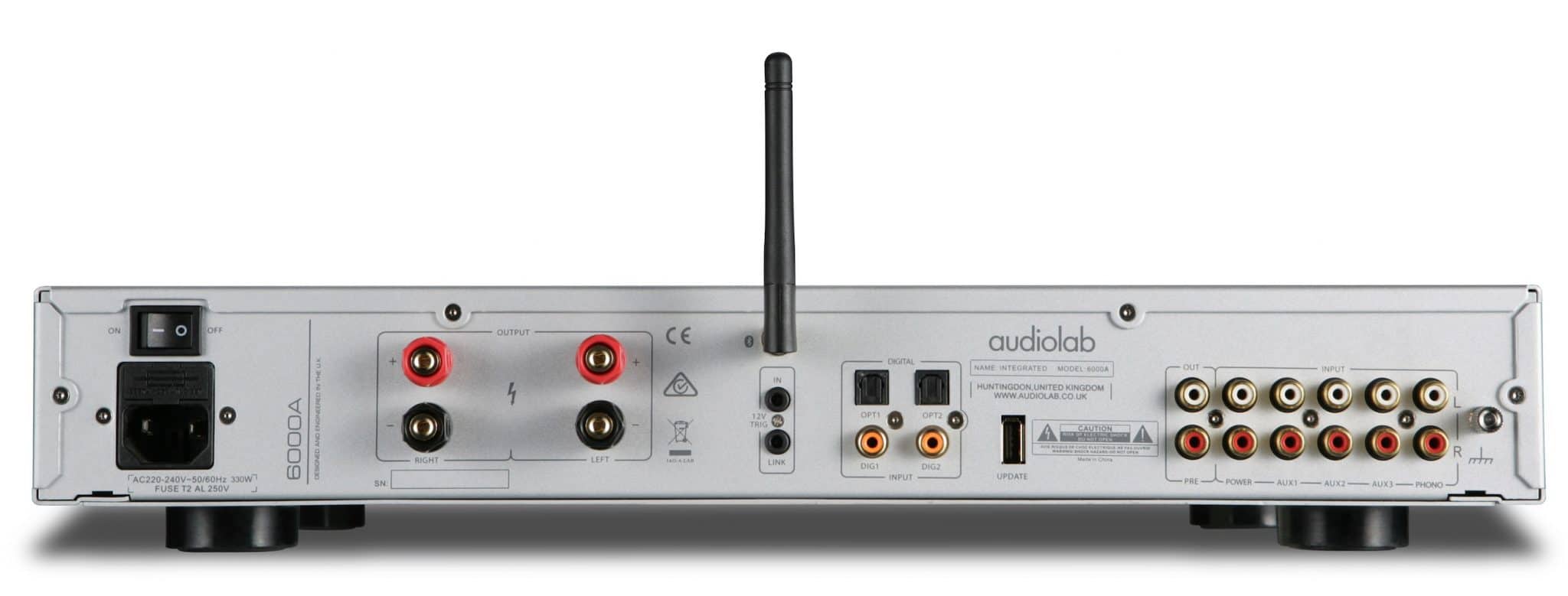
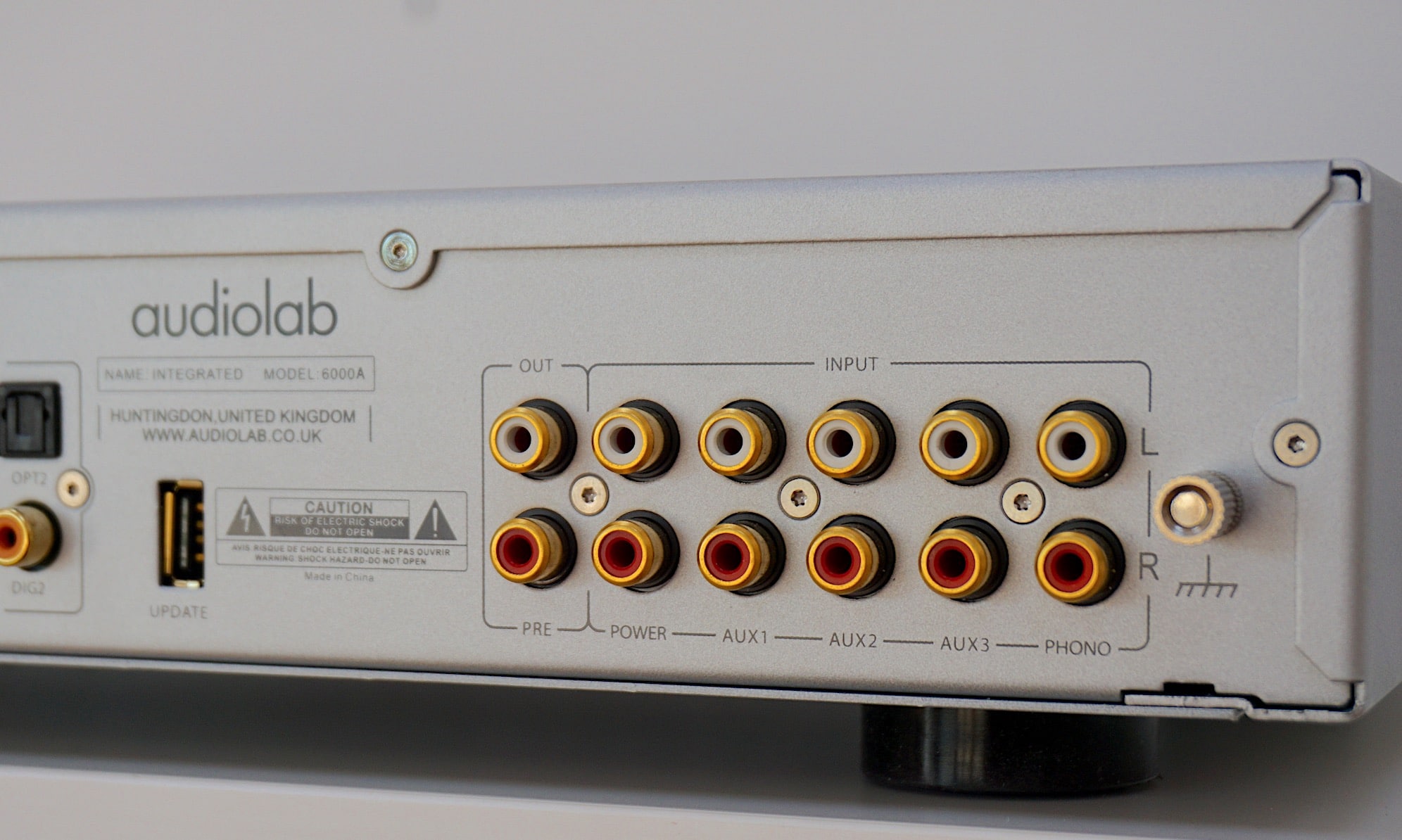
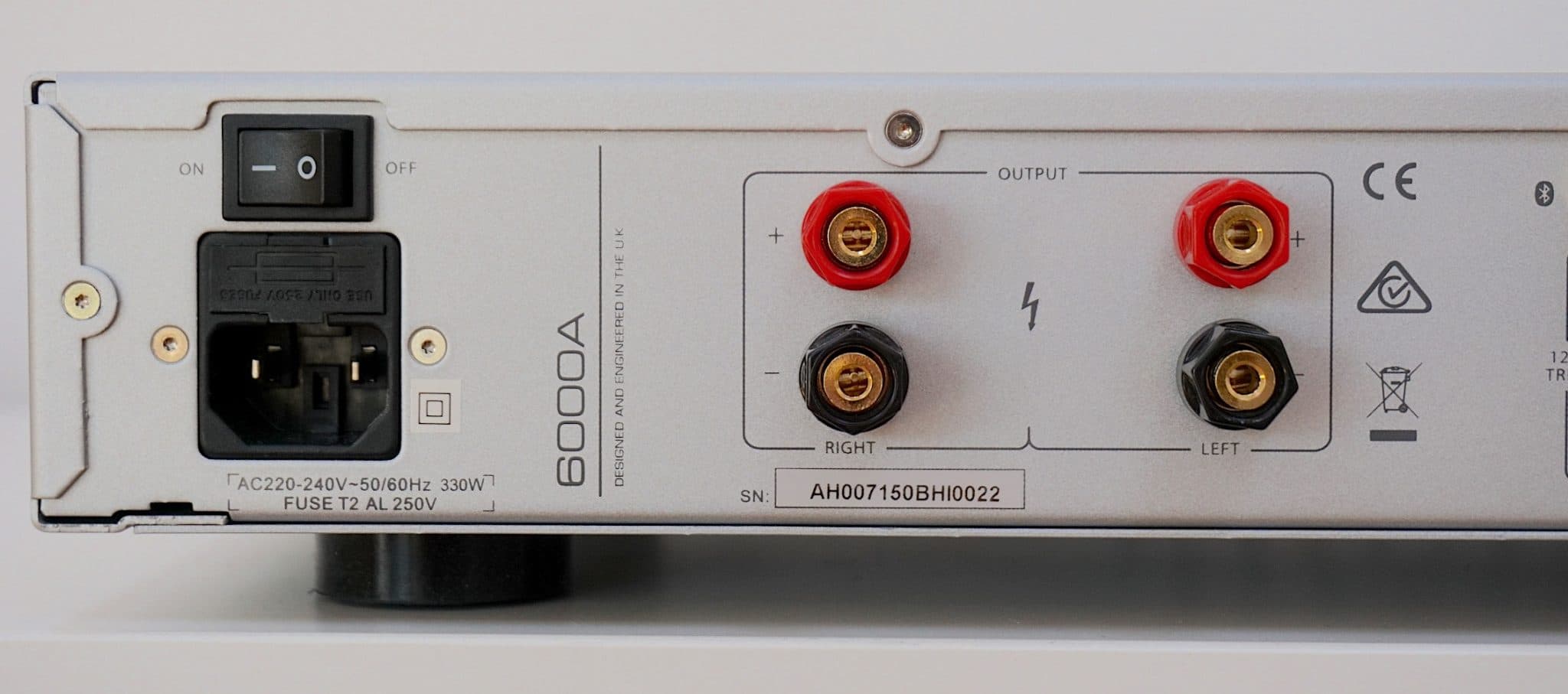
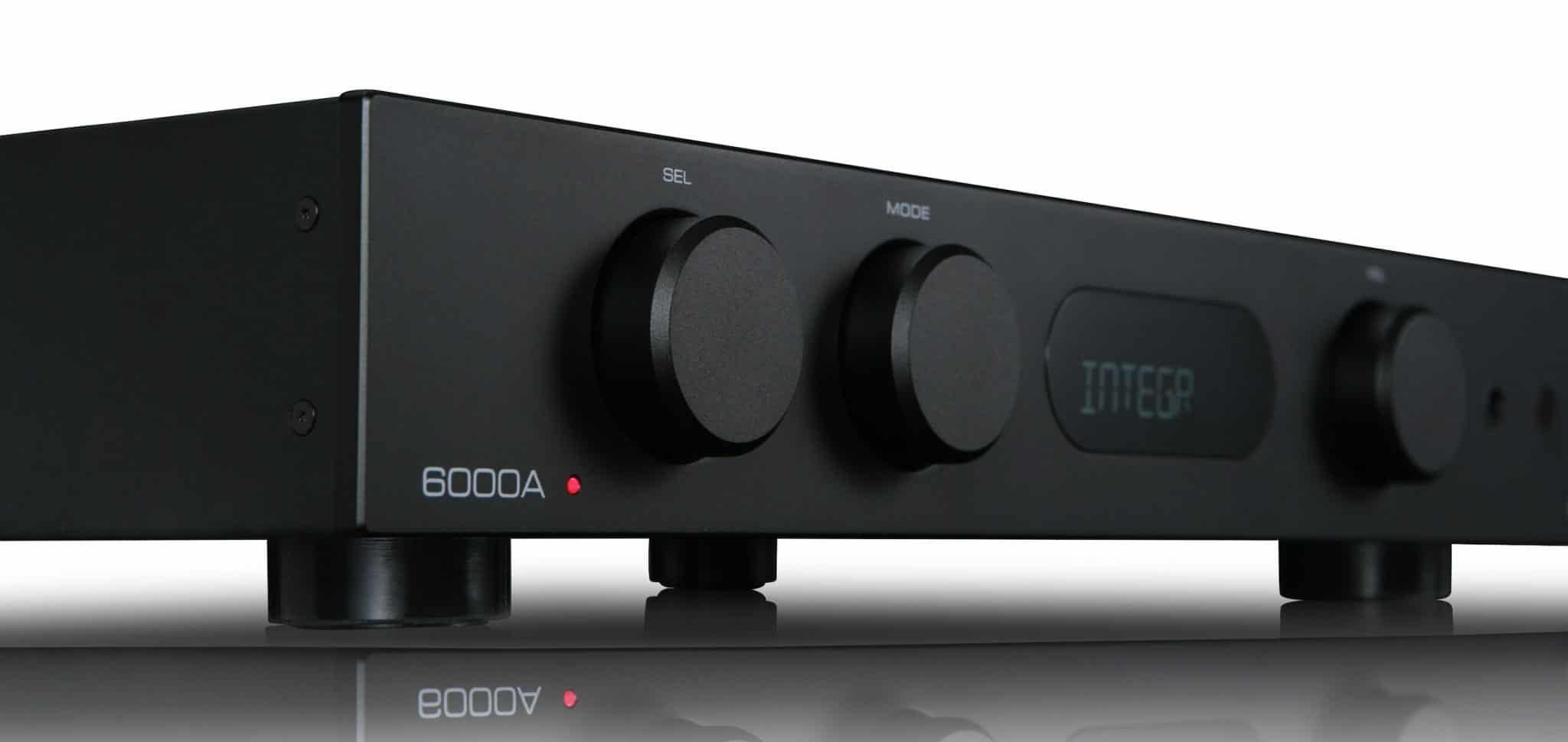
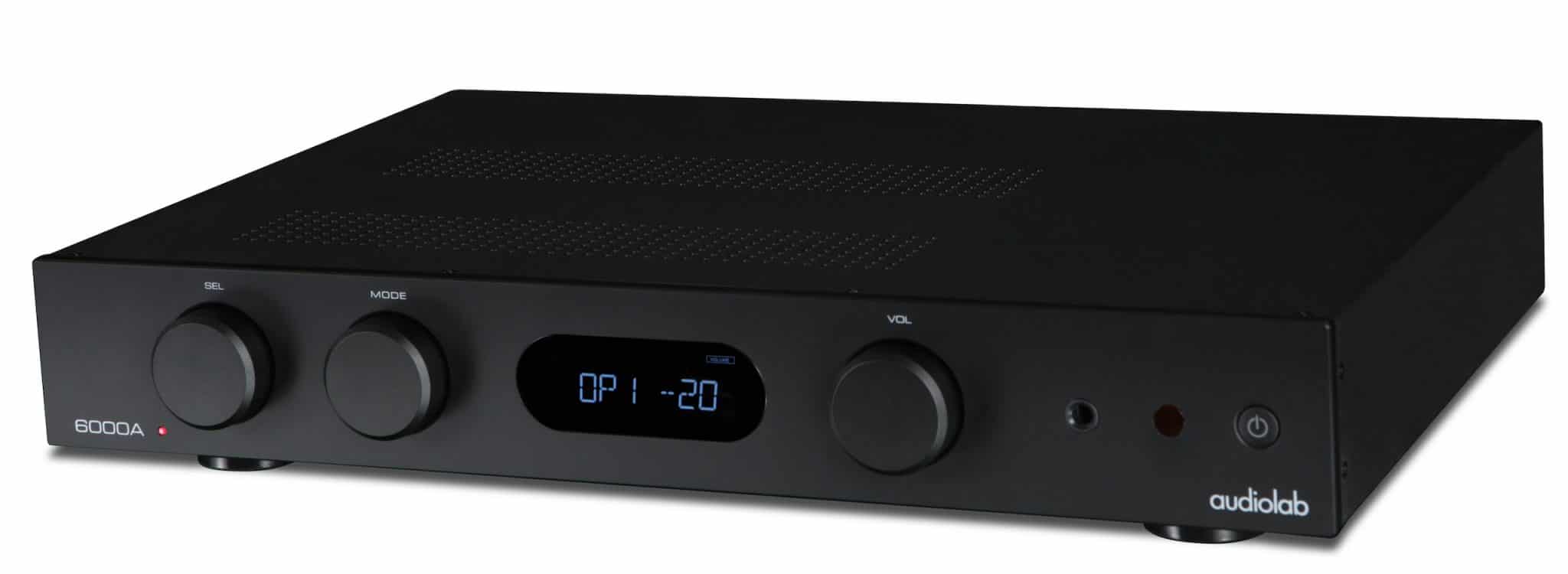
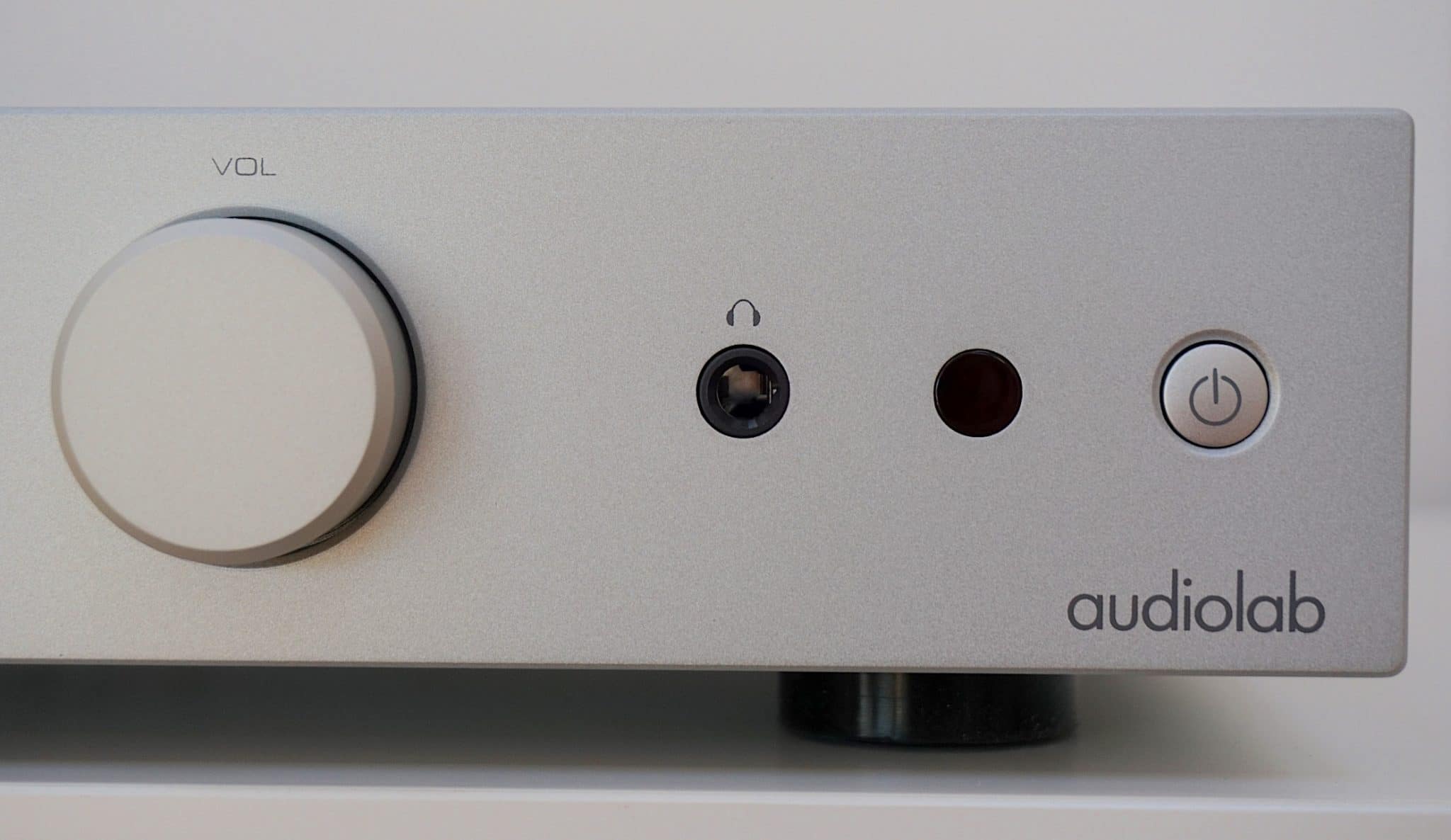
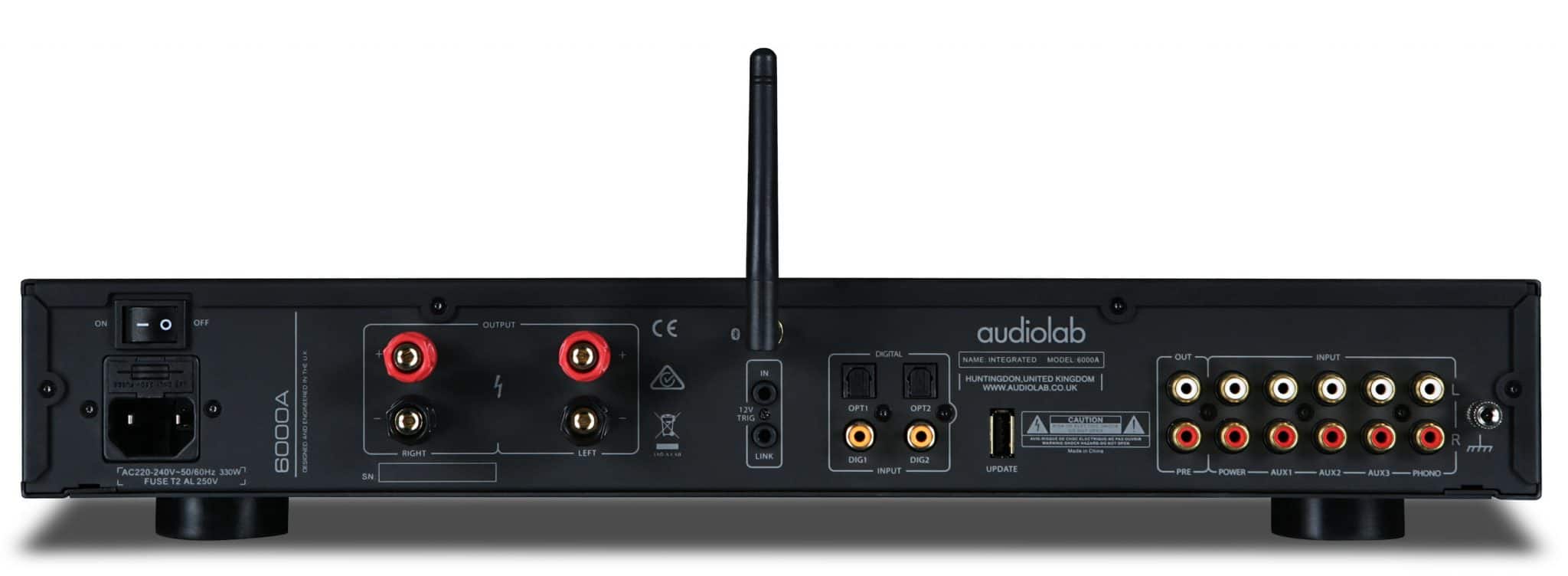

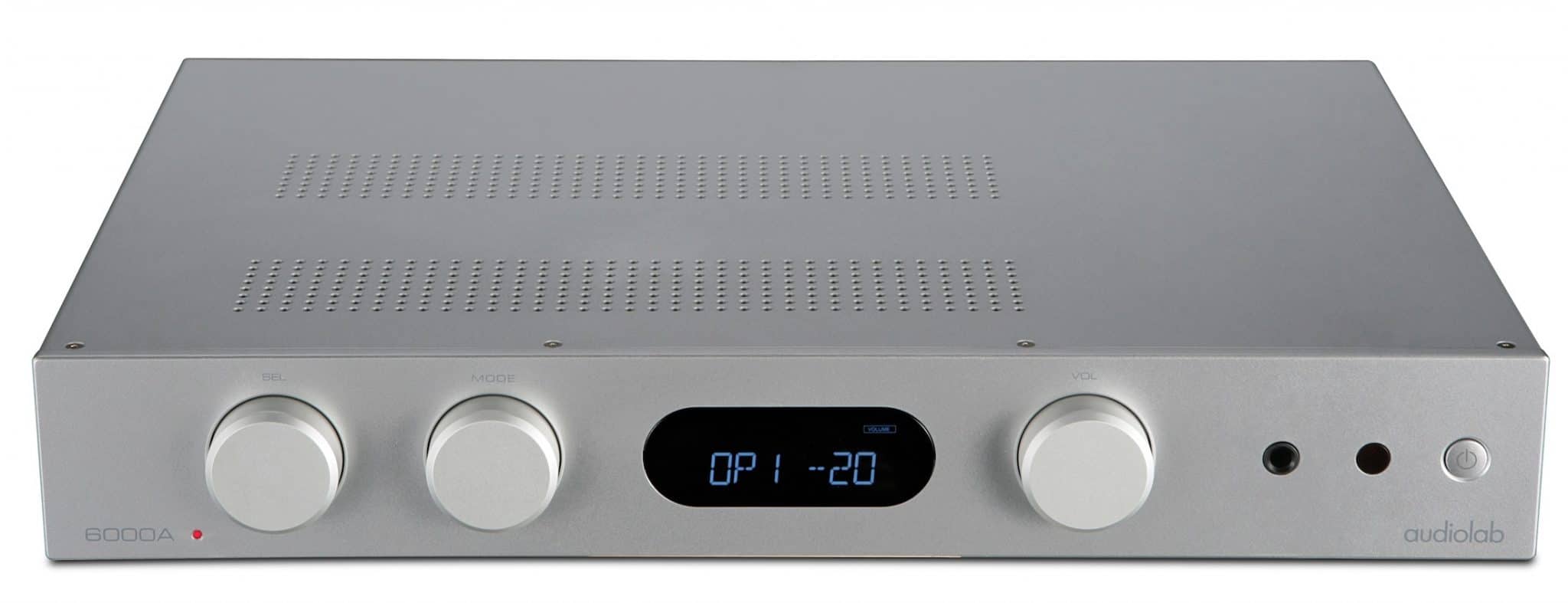
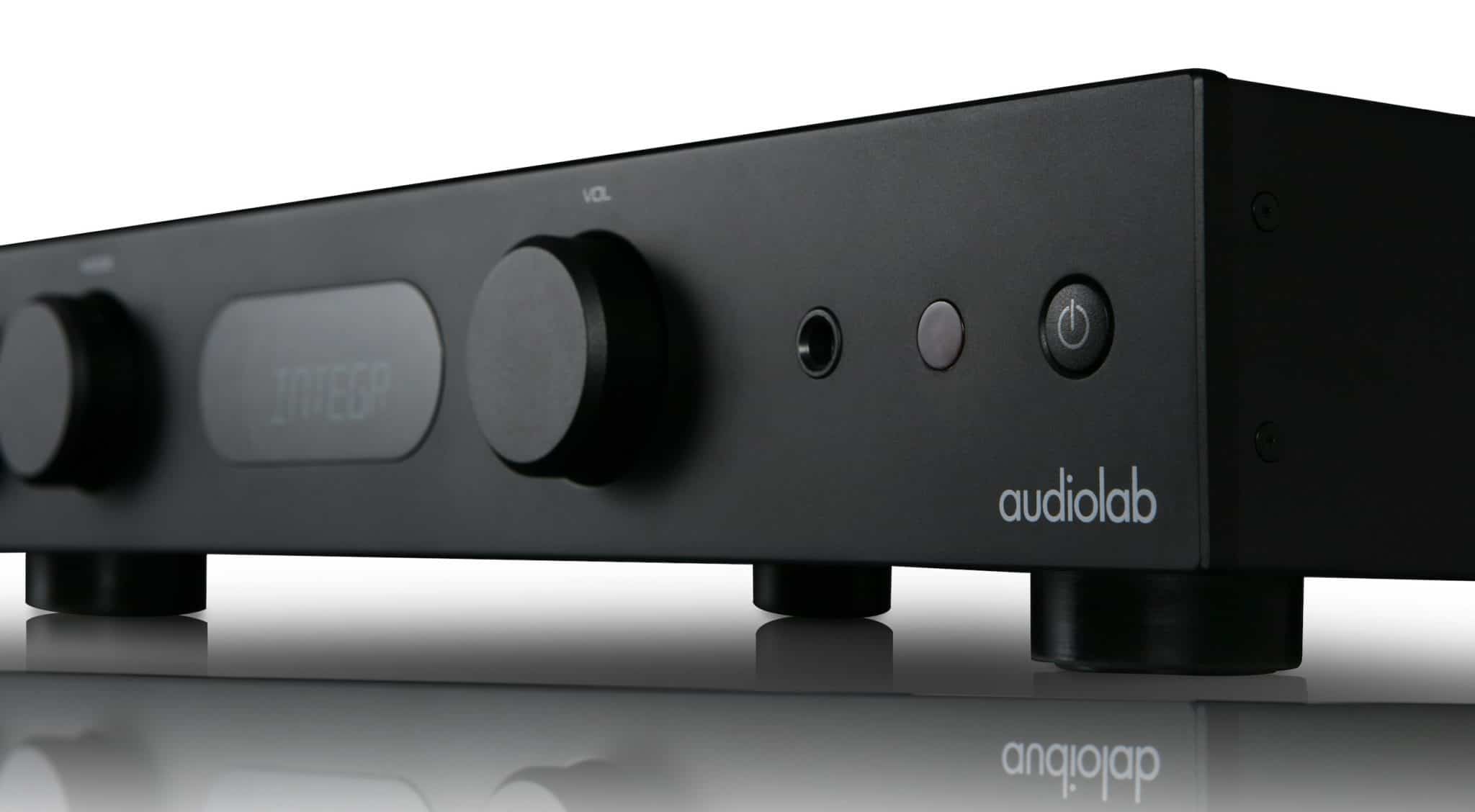
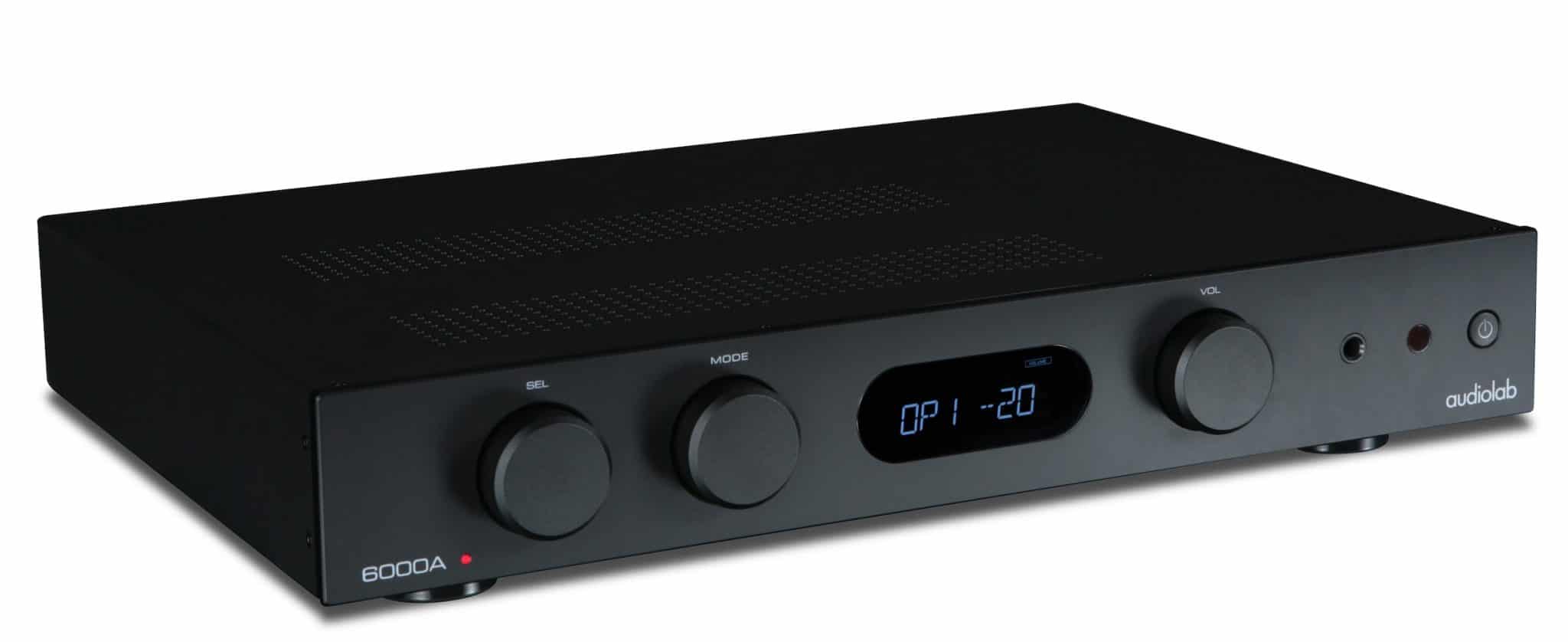



Fine to wait – am researching coax digital cable options as well as power cord upgrades – lots to keep me busy.
Thanks Peter – actually, I’m hoping to contact the guy who actually built the machine, to get the info from the horse’s mouth as it where 🙂
Hi Paul, what a wonderful review! I really appreciate your frank commentary. I’m very happy to have found your site. I am in the process of updating my stereo system after a 40 year hiatus. I have a late ’70’s pair of Celestion Ditton 33 speakers that I would like to couple with a new integrated amp and turntable. (My Kenwood integrated amp is long gone.) My amp decision is between the 6000A, CXA61 and the Peachtree Decco125. I see that you prefer the 6000A to the CXA61. Are you familiar with the Peachtree? Do you think that the 6000A is a good match for my Ditton 33’s?
My current turntable is an equally old Dual 721 that, due to rough moves, has seen better days. I was thinking of getting a Rega 2 or 3. Given the system that I am building, which of these two turntables would be appropriate? Any other suggestions for turntables? I had been considering a Pro-Ject Carbon, but was concerned about motor hum. Any suggestions on cartridges? I heard that the Ngaoka MP-110 is quite nice. Is the Elys 2 a substantial upgrade over the MP-110? It sounds like the Audiolab 6000CDT is a wonderful product and match for the 6000A, so no questions there.
Finally, would you suggest investing in a dedicated streamer or simply using a computer source for streaming media? What do you think of home-building a dedicated streaming source using a Raspberry Pi 4 (https://www.dagogo.com/advancing-audio-streaming-part-1-raspberry-pi-4-usb-network-audio-transport/)? Any thoughts on an appropriate USB to SPDIF converter to connect to the 600A? Thanks much for your help! – JP
Hi JP – yep, I’d go for the 6000A and it’ll work fine with the Dittons. The Rega 3 would be the better bet. The featured cartridge is fine for now. I’d spend any extra cash on an external phono amp and decent cables. A dedicated streamer would be a preferred purchase. Home building is fine and a great project if you’re into that kind of thing, sure. This is a good convertor: https://www.amazon.co.uk/M2Tech-HiFace-High-Digital-Interface/dp/B0081Z8YBI
Hi Paul, thanks much for swift advice. It is much appreciated. Sounds like the 6000A and Rega 3 are the way to go.
Thanks for your recommendation on the USB to SPDIF converter. I found a number of nice conversion units, Peachtree T1, X1 and Schiit Eitr; all of which have been discontinued. I also found the $90 Topping D10 which does the conversion along DAC functionality using an ESS ES9018K2M DAC chip (same as used in the 6000A). The reviews on the D10 look very positive, positioning it above the Schiit Eitr: https://www.audiosciencereview.com/forum/index.php?threads/review-and-measurements-of-schiit-eitr-usb-to-s-pdif-bridge.3753/ and https://hometheaterhifi.com/reviews/dac/topping-d10-usb-dac-and-usb-spdif-converter-review/ Do you believe that the M2Tech device will do a noticeably better job? It is over the double the price and doesn’t have a DAC.
As a DIY person, the home build approach opens the door on the box, and poses an interesting challenge to build the best possible system at the lowest possible cost, starting with the under $100 Raspberry Pi 4 and the $90 D10 for streaming. It is startling that the Bryston BDP-Pi Digital Player which retails at $1,495 is also based on the Pi. Given that the D10 has a DAC, analog only amps are fine. So, I looked at integrated amps at a number of different price points. At the low-cost point is a Fosi TB10A for $59: https://fosiaudio.com/products/home-audio-amplifier-receiver-tb10a For the next step up, I found the Yamaha R-S202BL which seems a remarkable value at $129. I enjoyed your article on the topic, https://thevinylfactory.com/features/8-best-budget-amplifiers-vinyl/, but the discontinued models I found were a bit on the expensive side (maybe everyone read your article). I could not find an Onkyo A-9010, but A-9110’s can be found for $299 (backordered until August). The A-9110 is analog only, but with the DAC in the DA10, this is not a real limitation. Finally, a step up from there could be the Denon PMA-600NE for $399.
If you were given the same cost challenge, would you pick the same amps? If I am only listening to streaming music on my Ditton 33’s, would I be able to hear the difference between the A-9110, the MPA-600NE and the 6000A? I realize that this is very subjective, but with social distancing, I am not able to listen to any of these system combinations. Your thoughts on this are much appreciated. РJP
Hi JP – I’m not a fan of convertors, I have to say. They add another link to the signal chain and threaten to dull sonics. If a convertor *has* to be introduced, I like to use the best possible.
As for amps? Check out Cambridge Audio: the AXA25 and AXA35.
The 6000A is the best option in terms of sonics but then you do pay for that, of course.
Hi Paul,
I have an old pair of Mission 760i bookshelves they are 6 ohms, and I really love them! would the 6000a go nice with it or is it overkill and should look somewhere else?
The 6000A would certainly get the best out of your speakers Max. Even if you’re looking at upgrades, you need to look further up the chain for that upgrade first before you address the speakers. From the source downwards, as it where. So that’s the better option yes.
Hi Paul, Thank you very much for your advice! I’ll be getting the audiolab 6000a
Hi Paul, Great article, I’ve just purchased the 6000A, picking it up on Monday and am really looking forward to setting up. I’ve have several questions if that’s ok. I don’t currently have any speakers other than my existing setup which is a pair of Dynaudio Xeo2s, which are powered and have built in DACs. Could I use the Audiolab as a preamp with the Dyns? I quite like the sound of Dynaudio as a brand but think the Xeos lack a bit of depth at times. I’ve been offered a really good deal on a pair of Kef R3s. Will the Audiolab be able to drive the R3s. Or would I need a better amp/ power amp later on. What would you recommend (XZT not available at the moment). I’m on a budget at the moment but the R3s are too good pass by or do you think I should go for something more suitable like B&W 606s? I know they are at different ends of the spectrum but would value your thoughts. One final thing (sorry), what speaker cable would you recommend? Thanks Pete
Hi Pete – To buy the 6000A and then use it as a preamp would be a complete waste of the design, to be honest. Also, if you want a preamp then I’d recommend a specialist unit (right tools for the job and all that). I would go for passive speakers for the 6000A. Sure, the R3s would be a fine addition and should run ok. For cables, buy the best QED cable you cn afford on Amazon, the price follows performance on these.
Hi Pete, I have the 6000a and R3’s, it’s a great pairing and I have QED XT400 cables. I’m also using the 6000n streamer with Amazon Music HD, I’m in love with music again.
Hi Steve, that’s good, I’ve just bought the R3’s arriving this week. Can’t wait to get setup. Going to hold off on a streamer for now as counting the pennies but sounds like the audiolab could be a contender.
Hi Paul,
Great review, can you share your answer to Savan Panchal on 12th May 2020 at 10:29 pm?
I’m thinking also to use 6000a to power my 3050i fronts with Ht bypass.
Also between 6000a vs ms2i or ms3i if it really a step up.
Thanks in advanced.
Paulo
Hi Paulo – I think Savan posted the same question over multiple platforms and YouTube was the first one I saw, answered that and saw the question here later. If memory serves, I think I said, “Not really Savan, it’s more of a sideways move. Both are nice but the benefits would be questionable. I would save and go for the next level up.” I’d stick with the 6000A re the ms2i but the 3i is a different beast and price point. If you’re looking to go there, that’s a different conversation and we’d need to talk about the whole hifi, budget, etc.
Hi Paul,
Thanks for your review. I currently have B&W 805 matrix bookshelf speakers and a 6ch ADA-6150 Power Amp which will be used as a stereo power amp.
Would you recommend the audiolab’s 6000a using preouts as a good pair with this setup or would you recommend a dedicated preamp instead. Thanks!
A dedicated preamp, Syed – you’d be buying the 6000A and then only using part of its facilities which would not only be a waste of your money but wouldn’t even sound as good as a dedicated model. You need the right tool for the job.
Thank you for the advice Paul! I appreciate it. Have shortlisted a couple of pre-amps РEmotiva PT100 and Yamaha WXC50. I’m looking for dynamic and immersive sound. Please do share your thoughts on a suitable pre amp ?
I’d probably lean towards the Yamaha from that list, Syed.
Thanks for your reply, Paul!
Do you recommend I pair it with an external DAC. If yes I do have a budget of within 500£ for a DAC. Or would you recommend another dedicated preamp with a better DAC.
I did see your Heed abacus review but that’s out of budget.
Separating hifi components is always a good thing as it lowers the noise floor so yes. Check out the DACs from Schiit – they offer great value.
Hello Paul,
Thanks for your help. Only mention the m3si, because I can get it for approx more 150‚Ǩ than audiolab and m2si, and it could be an investment for an future upgrade on the speakers, but i’m afraid that the m3si might not be a good match for my current speakers.
Thanks in advance.
Hello Paul,
Thanks for the fantastic reviews, really clear and easy to understand advice whilst paying attention to different budgets.
Am looking at the following, can you let me know if its a good match please?
Rega Planar 3 with Elys 2 (upgrade the cartridge later on & Rega Fono MM MK3 or Schit Mani)
Audiolab 6000A
Q Acoustics 30201i
Thanks again
Keith
Sounds good to me, Keith!
Paul,
Thank you for your detailed review both here and on YouTube. I love that you respond to so many comments on here too! Your review was part of my thinking in ordering a 6000a Play, which I assume will perform very similar to the 6000a. However I’m having some buyer’s remorse as I’m wondering if the Cxa81 (which lists at the same price as the 6000a Play in the US) would have been a smarter choice. I know at some point in the threads above you mentioned you haven’t spent much time with the Cambridge Audio Cxa61/Cxa81. Is that still the case, or do you have an opinion on how big the difference in music quality is between these? As an additional bonus the CX does have better input / output combination including an A/B switch.
Somewhat related, I would love to connect my 6000a to both my indoor speakers and then switch to the outdoor ones when needed too (they would Not be used at the same time). Is there a simple selector that can accomplish this without impact to audio quality?
I’m sure you can buy simple switch selectors from the likes of Amazon sure and, in practical terms, there should be any issues with that but I wouldn’t recommend that direction in sonic terms because sound quality would be compromised. Simple and cheap switch units like this introduce lots of noise into the chain.
The Cambridge is much more expensive than the 6000A so the comparison is not wholly fair. That said the 81 is highly regarded so, if you went for that, Im sure you wouldn’t be disappointed.
Thank you Paul. I appreciate the response. In the US, the price is identical between the 6000A Play ($1299) vs the CXA81 ($1299). The only difference is that the 6AP would also provide a full fledged streamer with Play FI in addition to the integrated Amp, while the CXA81 would require some other source for high quality music. Given the choice (not based on price alone), would you choose the CXA81’s and pair that with a third party streamer (e.g. BlueSound) vs. the integrated AudioLab solution (6000A Play) that is maybe $200-$300 cheaper once the streamer is included?
Other than price difference, I’m trying to figure out how different the audio quality is really. Is it about having a warmer sound profile on the CXA81?
Well, if you’re open to isolating your components then I would grab a 6000A, a separate Bluesound 2i and spend more cash on the interconnects plus isolation feet to support both. That would provide an excellent sound output.
Hi Paul,
how would you hook it up? would you use the Node 2i DAC for MQA streams or would you use the better 6000A DAC but miss out on the MQA?
Thanks
Andrew
Hi Andrew – ultimately, I would aim for a separate DAC and use the 2i for streaming. For now, I’d use the 2i’s DAC but by all means spend an afternoon testing both the 2i and 6000A DAC to see which you prefer.
Hi Paul – thanks for the incredibly useful review. I have an 8200CDQ and am looking for a new amp… I can pick up an 8200P used for a good price, but now I‚Äôm wondering about the 6000A. I don‚Äôt strictly need the preamp part since the CDQ has that covered, except for a phono input (so I‚Äôd have to buy a phono stage as well as a power amp, pushing the price up.) And Bluetooth might be handy too! Would you recommend using the 6000A in this way, with a CDQ? Would the older power amp sound much better at low-ish to medium volumes? My room is about 4.5m square and I‚Äôm using Tannoy floorstanders – DC6T SE. Thanks!
Hi Bobby – I’m a big proponent of using the right tools for the job so, if you want to use an integrated amp, then I’d allow the design to its job and supply both pre/power in the manner it was designed to do. If you want a preamp and a power amp, I’d advise buying separately and obtaining specialists which will, again, do a better job in the end. Otherwise, you’ll muddy the sound. I’d only recommend going down your suggested route as a very temporary solution while you’re in the middle of a quick upgrade. Hence, I’d go for the 6000A as your main amp and plug the CD player into the rear of the 6000A as a CD player only.
Hi Paul, hope you are doing well. I have recently purchased the bluesound node2i and this acts as my pre-amp and DAC. Now i am currently upgrading the bookshelf speakers and power amp. My question is regarding choosing the amp. Along with the audiolab 6000a integrated amp, I have also shortlisted the Edwards audio P7 as it is a dedicated stereo amp. Do you have any feedback on the P7 compared to the 6000a. While I am very satisfied with the reviews and suggestions for the 6000a, I am only considering the P7 as they are seperates and from what I hear seperates are still the better option.
For your reference, I am looking at the Q acoustics 3030i or other speakers in the same budget.
Hi Sub – I haven’t tested the P7 and don’t know anyone else who has used the P7. That said – and I’m generalising so take this bit with a pinch of salt – I find Edwards amps powerful with a solid bass but not exactly brimming with finesse. Whereas, I know the 6000A is tonally balanced. So I’d go with the 6000A. If you can up the budget then sure, a pre/power separate combo will be superior. But you’ll need to throw more money at that.